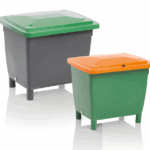The existence of permanent tattoos and piercings can be dated back to ancient times. People used to have things for this decorative art for entirely different purposes. Fast forwarding to today, health and safety are the two fundamental things that matter while having a permanent tat, piercing, or any other body modification. This blog will give you insights into permanent tattoos and piercings, a little about their history, different types of body modifications, and the pros & cons of having such aesthetic crafts.
Let’s get started.
Tattoo
A tattoo is a process of inserting ink into the second layer of skin—called the dermis—with the help of microneedles. The ink changes the skin color to the desired color and allows you to craft the image of your choice. Body Art, such as black art tattoo, represents your self-expression but also damages the skin and causes complications.
Complications Involved
When you get a tattoo, a tattoo artist—such as SwornOathTattoo professional— uses a machine with an attached needle that punctures the dermis. This device is responsible for injecting ink into the dermis, which contains critical health risks.
They include:
- Allergic reactions to tattoo dyes.
- burning sensation or swelling
- a staph infection or cutaneous TB
- granulomas, or nodules of inflamed tissue
- Contaminated tattoo needles can give rise to many bloodborne diseases, such as hepatitis B, hepatitis C, HIV, and tetanus. Moreover, the tattoo ink can even interfere with magnetic resonance imaging (MRI) tests.
Safety Tips
- Always inspect the area around the tattoo for rashes.
- Visit a trustworthy, licensed tattoo shop to get inked. Authenticate your local health authorities for the most recent safety laws, as state-specific tattoo restrictions and criteria can differ.
- If the tattoo studio lacks adequate hygiene, avoid getting a tattoo from there. Always ensure they clean and sterilize their work areas, chairs, and non-disposable equipment must be cleaned and sterilized.
- Ensure your artist washes their hands and puts on a clean pair of gloves before getting started.
- The most important is to ensure your artist uses the new needle every time you get a tattoo. SwornOathTattoo in Colorado always ensures the hygiene and safety of their clients.
- Try to cover fresh tattoos with a sterile bandage or gauze.
Piercing
This is another popular form of body enhancement. This process also requires a needle to create a hole in the body. Unlike tattooing, piercing is about adding a piece of jewelry—gold or silver—to augment your outlook. They can range from simple ear piercing to more complex piercings such as tongue, nose, or eyebrow piercings.
The list of body parts that which you can pierce includes the following:
- nose
- ears
- Tongue
- Eyebrows
- cheek
- lips
- navel
- genitals
- nipples
Risks Involved
Piercing stands the most chance of mouth and nose infection as these areas contain more bacteria. Some people develop a bump after getting a piercing. And this pus-filled mass can take days to cure. If left untreated, there’s the risk of sepsis or blood poisoning.
Complications involved with body piercings include:
- swelling around the piercing site
- formation of a keloid around the piercing
- bleeding caused by a damaged blood vessel
- Blood poisoning that can further cause: high fever, chills, rapid heart rate, rapid breathing
Safety Tips
- Health professionals say you should only pierce the earlobes using a piercing gun. Your body part’s piercer should use a hollow needle on other body parts to prevent damaging delicate tissues.
- Piercers ought to cleanse their hands before donning new disposable medical gloves.
- Use a new needle every time you do body piercing.
- Moreover, ensure your jewelry is disinfected and avoid using thrift jewelry.
- After each client, piercing tools and surfaces must be cleaned and sanitized.
Other popular body modifications
There are many different types of modifications that people can do to their bodies. Some people have blackwork tattoos, piercings, or even scarification.
Tattoos are an ancient form of body modification and have been around for thousands of years. People originally tattooed themselves for religious purposes, but now they are mostly used as decoration or to represent something important to the person who has them done.
Today, permanent makeup is highly in trend in the form of tattooing. This modification uses permanent ink to enhance the look of lip liner, eyeliner, eyebrow enhancement, or other kinds of makeup.
More extreme body modification techniques include:
- Stretching earlobes with jewelry.
- Implanting beads into scarification.
- Purposefully scarring the skin by utilizing dermal punching to make a hole in the cartilage.
A Little About Their History
Today, name tattoo designs for males and females are quite raving worldwide. But we consider American statistics; nearly 40% of the population has inked their body. However, the intent of a tattoo differs from person to person.
Body modification has risen from the periphery of society to the center since the mid-to the late 1980s, particularly among teenagers. The three most popular types are scarification, tattooing, and body piercing. All three are present in numerous historical and contemporary cultures around the world.
The earliest tattoos were said to have originated with the Egyptians around 2000 BC. Later, a 1991 find showed that the Iceman had tattoos and was, according to carbon dating, about 5,200 years old.
In essence, this demonstrates the age of this artistic discipline.
The oldest piercing is thought to date back more than 5,000 years. This mummified body has pierced ears and enlarged earlobes (7–11 mm in diameter).
It is thought that the earliest ear piercings made by prehistoric societies were done so for mystical purposes. The tribes believed that metal would ward off demons and evil spirits. As a result, they wore metal earrings to ward them off.
Today, tattoos and piercings are widely accepted in many body locations. Fortunately, SwornOathTattoos now has more specialized equipment for the name tattoo designs and a far larger selection of gorgeous, one-of-a-kind jewelry to go with piercings.






